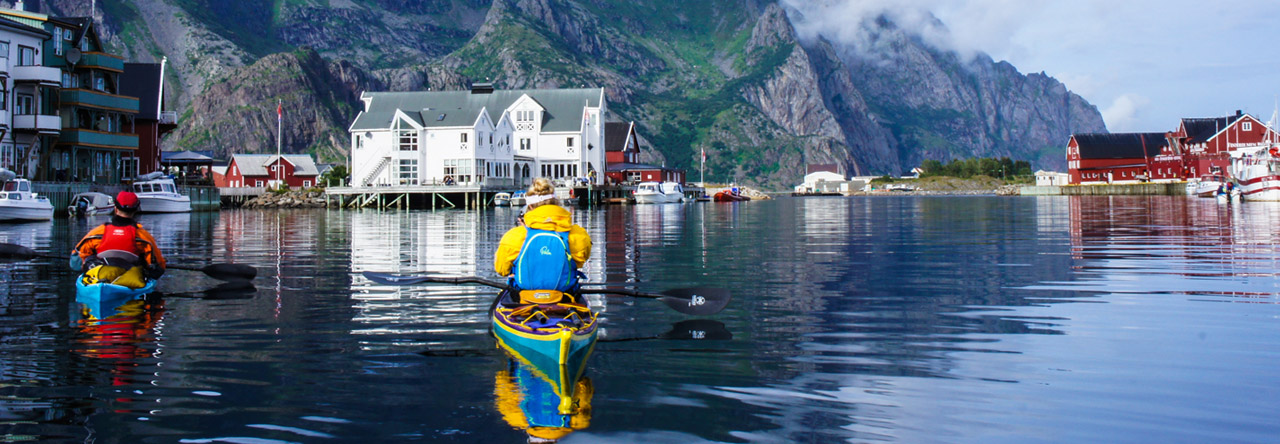How often do your sea kayak excursions extend beyond a long weekend?
If the answer is ‘rarely’, you’re not alone; in speaking to our customers, colleagues, and counterparts, it became clear to us that few sea kayak trips justify the length and storage capacity of expedition-ready models such as the Scorpio.
While we’re proud to say that the Scorpio’s meticulous design means that there’s little disadvantage in manoeuvrability, and that our advanced CoreLite X material helps keep weight to a minimum, it’s hard to bring the boat weight lower or make transport and storage any easier without losing some of that length.
It’s at this point that the Virgo was conceptualised; a compact, but uncompromising sea kayak for weekend warriors.

In many ways, the Virgo is a successor to the firmly-established Easky 15, but almost 20 years on, it’s safe to say boat design and features have come a long way!
Our focus was on retaining the familiar stability and hull speed, complimenting the surf potential that a boat of such manageable size and weight creates with a carving rail, and packing in all the essential features you’d expect of any other sea kayak in the P&H range, including a low-profile back deck for easy rolling and re-entry, and the option of a Bow Mini Hatch just in front of the paddler.
Here’s a summary of the Virgo’s key features:
- The short, 14’6” length increases the play potential and keeps the overall boat weight at a minimum, meaning you can really throw the Virgo around on the water all day long, and still easily lift it on to the car afterwards.
- A V-hull cuts cleanly through the water and tracks beautifully when you’re simply headed for the horizon but softens towards the centre of the boat for comfortable stability and easy release when you’re exploring what you find there.
- Moderate rocker allows the Virgo to pick up and carry speed efficiently when flat but swing around effortlessly on edge, perfect for catching surges and weaving in and out of every nook and cranny when rock gardening.
- As well as responding to traditional sea kayak edging techniques, the Virgo’s hard chines engage for carving performance when edging into the turn; highly intuitive for beginner/intermediates or those from a whitewater background, and exhilaratingly responsive on a wave.
- A moderately steep bow ensures a high proportion of the length acts as effective waterline for hull speed and combines with flared bow edges to give a dry ride through choppy water and lift the boat over waves on the paddle out from the shore.
- Carefully planned bow deck geometry provides stiffness and strength for deep water rescues, kayak sailing, and all the other demands of a varied, memorable trip.
- The rear deck is ergonomically shaped and minimal in height to allow easy rolling and re-entry and features a paddle shaft recess for bracing during entry, giving you the confidence to try new and more adventurous things.
- Bulkheaded bow and stern main hatches with market-leading KajakSport hatch covers, providing ample capacity for long weekend adventures and maximum safety when exploring remote coastlines.
- Styling and functional details such as split paddle recesses, a drop-forged, anodised aluminium security point, a paddle park, a full complement of deck lines and bungees, and comfortable, highly-adjustable and reliable outfitting are in keeping with P&H Sea Kayak design heritage and round out the Virgo’s design to make it something that’ll be a pleasure both to own and paddle.

It’s nice to have options, and on the Virgo, they are:
- A Silva 70P compass (northern or southern hemisphere variants are available) fitted to the moulded recess in front of the bow hatch.
- The choice of CoreLite X for hull stiffness and minimal weight, or MZ3 for high impact resistance.
- An optional Bow Mini Hatch for close-to-hand storage of on-the-water essentials like snacks and sun cream.
- The ability to simply and securely install a P&H Sail System using the moulded-in inserts.
- Skeg or Skudder options with the choice of a simple cleat & cord or advanced MKII Skeg Slider System control.

You can expect to see the Virgo arriving with dealers in the UK and Europe over the next few weeks, and the following dealers have confirmed the will have a demo available:
| FRANCE Passion Nature, Saint Jean d’Illac |
| SWITZERLAND SeeKajak.ch, Illnau Siesta Oppi, Neuenegg |
| GERMANY Sport Schröer, Unna Gadermann, Norderstedt Paddelprofi, Konstanz |
| DENMARK Kano & Kajak Butikken, Søborg |
| NORWAY Padlespesialisten, Arendal |
| FINLAND Welhonpesä, Klaukkala Melontapiste, Turku North-West Import, Espoo |
| NETHERLANDS Kanocentrum Arjan Bloem, Wormer |
| SCOTLAND Sea Kayak Oban, Oban |
| ENGLAND AS Watersports, Exeter Wild Things, Redruth Kent Canoes, Wrotham Whitewater the Canoe Centre, Shepperton South Coast Canoes, Wimborne |
| WALES Summit to Sea, Holyhead Up and Under, Cardiff |
| IRELAND I-Canoe, Dublin Bantry Bay Canoes, Cork |
North America will see the Virgo reach its shores later this season; contact your local dealer to let them know you’re interested!
#ExploreTheSea with P&H Sea Kayaks


























